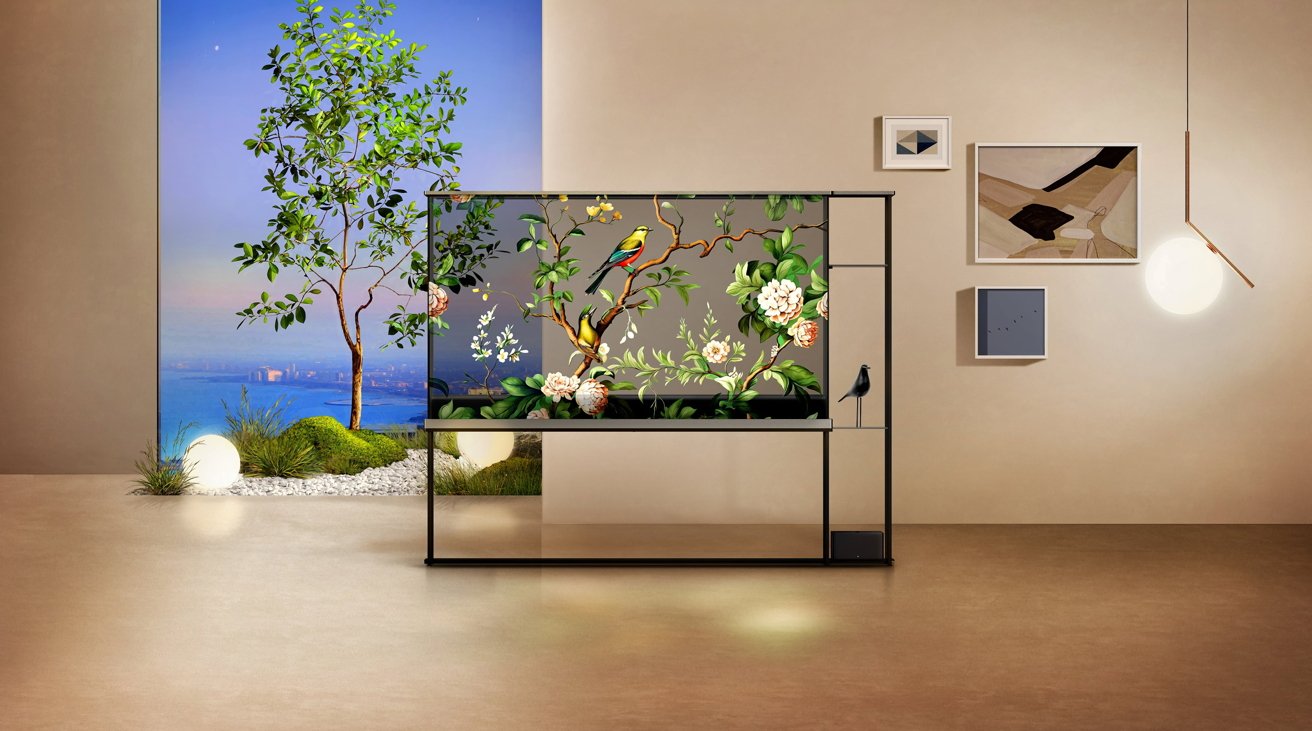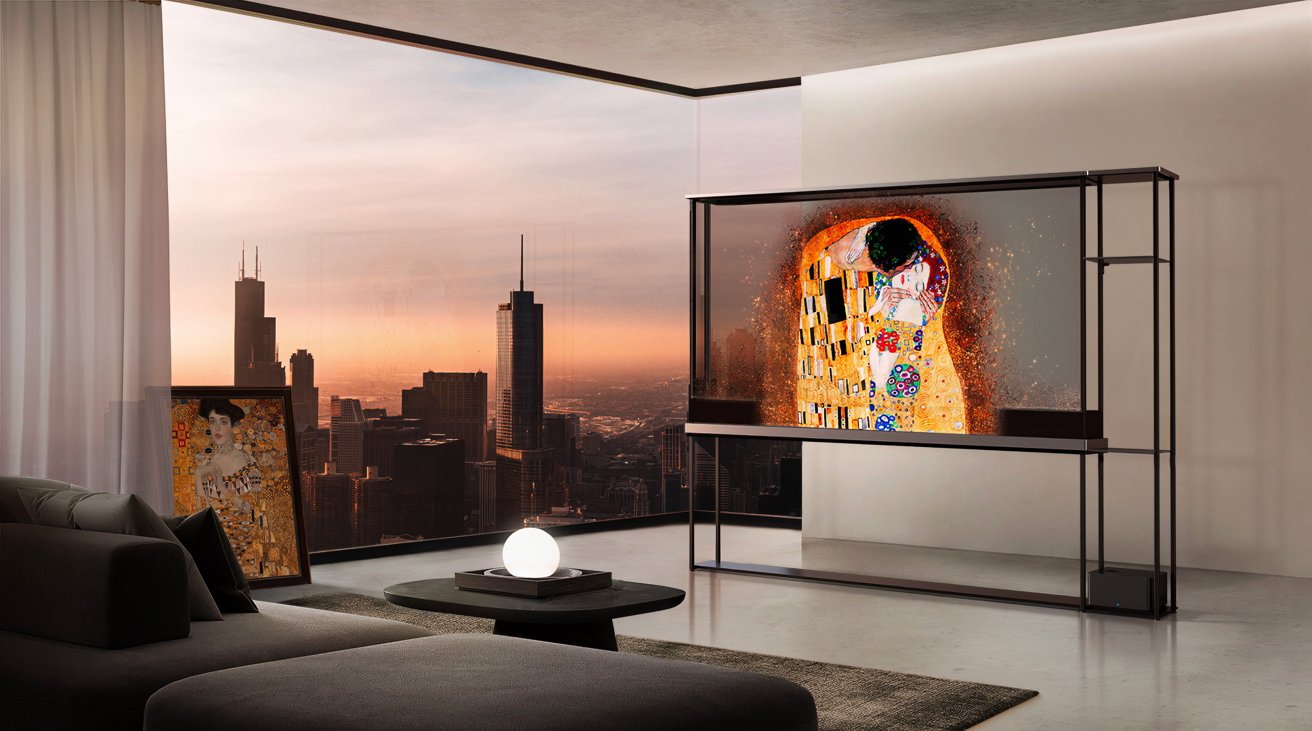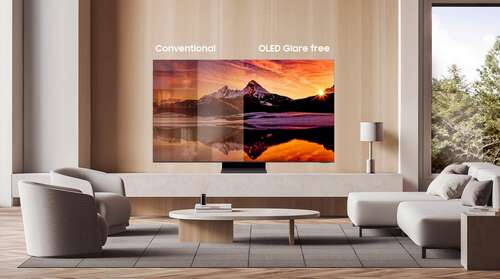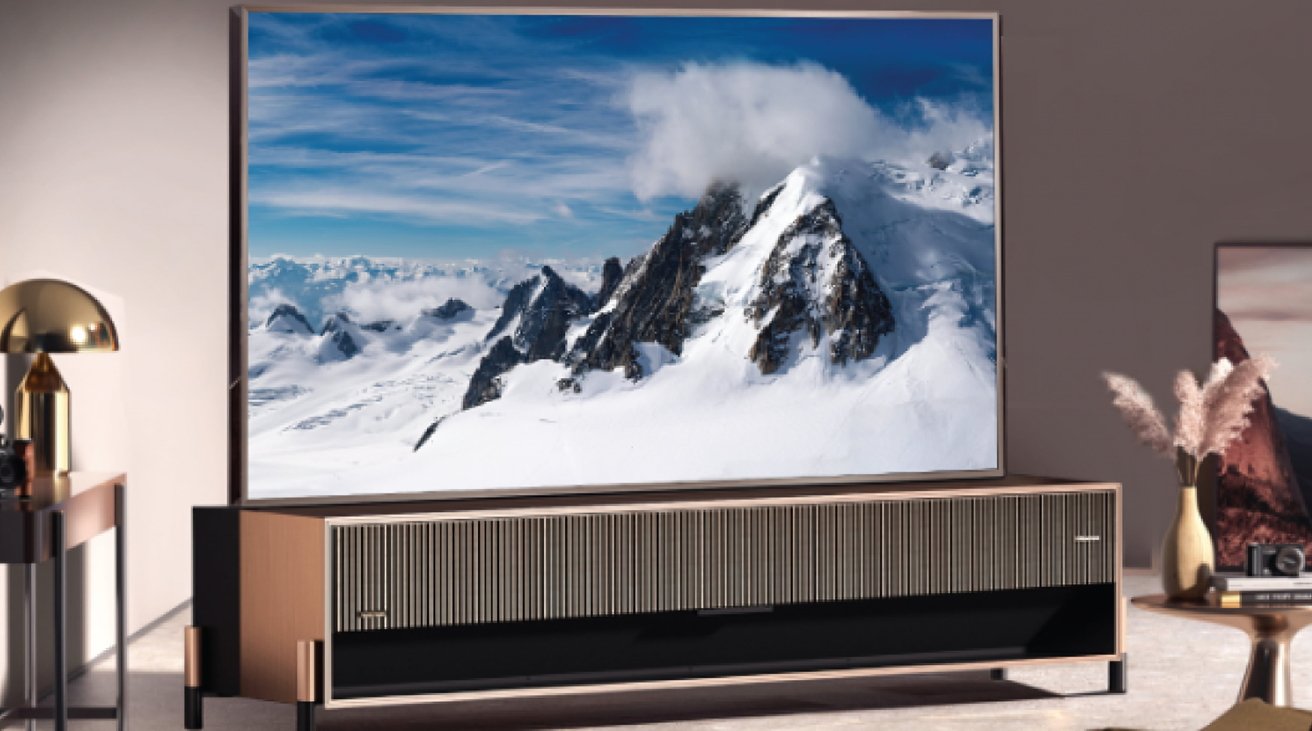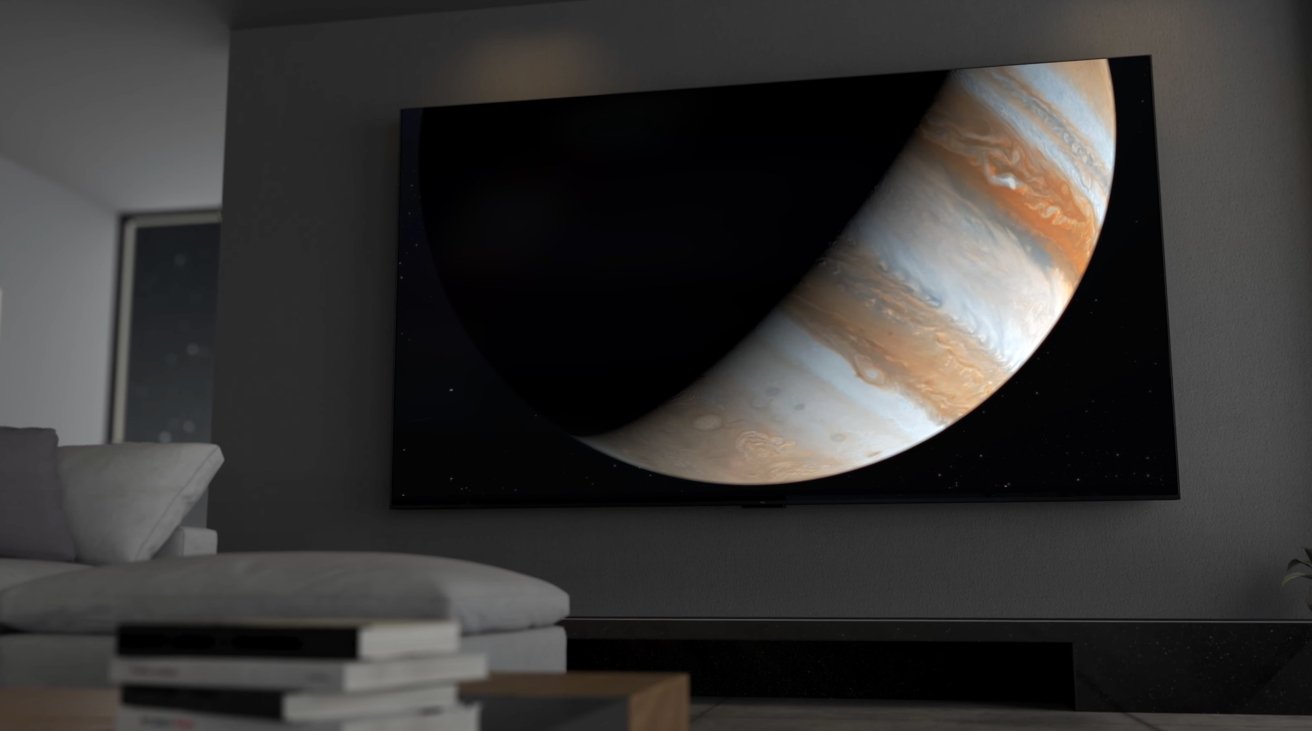CES has become synonymous with major television announcements. Here are some of the biggest launches at the event (mostly) relevant to Apple users, both figuratively and literally.
The Consumer Electronics Show has always been dominated by news about massive or outlandish televisions that major manufacturers put on sale, often for eye-watering amounts of money. Sometimes it’s not just size, with unusual features also catching observers eyes, if not necessarily their wallets.
In 2024, the pattern continues, with the Las Vegas tradeshow featuring a wide array of televisions on the show floor. These are the launches AppleInsider thought were most interesting.
LG
The South Korean tech giant’s CES experience includes the usual introduction of its 2024 lineup of televisions, with its OLED lineup now sporting a new Alpha 11 AI processor with four-times the AI performance of previous models. It enhances picture and audio quality with a 70% graphical performance, upgraded upscaling, Dynamic Tone Mapping Pro to more granularly fine-tune brightness and contrast, and a virtual 11.1.2 surround sound from the speakers.
However, LG’s crown jewel of the collection is the Signature OLED T, which is a transparent 4K OLED television. Measuring 77 inches, it eliminates the typical black mirror effect when turned off, effectively hiding from view when powered down by allowing owners to see the wall behind it.
Even more impressively, LG also claims it is the world’s first wireless transparent OLED TV, with it leveraging LG’s Zero Connect Box to wirelessly transmit sound and picture to the screen itself from across the room. Though it does require power to operate, there are no other cables or wires that actually connect up to the television itself.
LG reckons that the transparent and wireless approach frees up the television to be installed in new ways, other than the usual against-the-wall approach most TV users employ. Instead, it could be placed in the middle of the room to act as a divider, or could be placed near a window without blocking the view.
Its always-on-display feature can also be useful, showing art, videos, or photographs in a floating frame in mid-air. A T-Bar feature can also run an info ticker at the bottom of the screen, showing weather and news alerts, or even song titles that are being played, when the TV is not in use.
LG didn’t offer information about pricing or availability for its Signature OLED T, but it will undoubtedly be an expensive proposition for consumers.
Samsung
Samsung is usually a big-hitter when it comes to CES television launches, and it does have some unusual offerings, such as the demonstration Transparent Micro LED Display and the Ballie roll-around personal assistant with a built-in projector. And yes, there was the new Neo QLED 8K and 4K screens with 8K upscaling driven by an improved neural processing unit and a shallow 12.9mm depth.
It’s arguable that Samsung’s best showings was for one of its more conventional televisions. Its 2024 OLED lineup is headed up by the S95D, a giant 77-inch television that offers seemingly fairly conventional improvements
The main selling point for the model is its OLED Glare Free technology, which reduces the amount of reflections on the screen. Instead of seeing light from a window or nearby light being bounced off the screen, users can instead see a much clearer image, thanks to its specialized hard-coating layer and surface coating pattern that eliminates the traditional gloss finish.
Along with that, the S95D has AI-enhanced color accuracy that offers deep and rich blacks that are Pantone validated. It’s also 20% brighter than previous models, making it Samsung’s brightest OLED screen, and one that also supports high refresh rates up to 144Hz.
It’s also thin at 11 millimeters, and uses the One Connect Box to connect set-top boxes, rather than doing so directly around the back. The onboard Tizen provides smart TV functionality, complete with per-user recommendations, and given Samsung’s app support, it should also include the ablity to use Apple TV+ and Apple Music as well.
Hisense
On the massive TV side, the flagship introduction from Hisense is its 110UX, a mini LED TV that, as the name implies, is 110 inches in size. The giant screen is the biggest in its new collection, and has some of the best specifications too.
Thanks to its use of mini LED, Hisense claims the screen is capable of outputting up to 10,000 nits of brightness, an extremely bright panel compared to the average. There are also 40,000 local dimming zones across the display, a gargantuan number which will help keep contrast high and accurate.
HDR support is also expansive, with claims it covers 95% of the BT.2020 color gamut. It also has a 1.28% reflectivity rating through its use of anti-glare film and a specially designed internal panel structure, while its STW2.0 wide-angle film technology further reduces glare and backlight leakage.
Onboard is Hisense’s AI-based X-chipset, which can apply a number of treatments to the picture such as AI Depth or AI Contrast to improve quality on the fly. There’s also IMAX Enhanced, Dolby Vision, Dolby Gaming, and Freesync Premium Pro support, and given its other televisions support Apple’s HomeKit, it’s likely that the 100UX and others in the 2024 range will too.
Again, Hisense hasn’t offered pricing or availability information for its 110-inch television.
TCL
Continuing the theme of massive TVs, TCL brought an even bigger one to CES for 2024. The 115QM891G is claimed by TCL to be the world’s largest QD-Mini LED TV, measuring 115 inches diagonally. That equates to a screen that’s about eight feet wide and close to five foot in height.
Its size is impressive, but so are its specifications, with the Mini LED television capable of up to 5,000 nits of brightness, and packing in 20,000 local dimming zones. It’s also capable of a refresh rate of 144Hz with VRR, an anti-glare treatment to reduce reflections, and IMAX Enhanced TV support.
For audio, it has a built-in 6.2.2-channel Dolby Atmos speaker with subwoofer, with it also sporting AI upscaling, a NextGen TV tuner, and Wi-Fi 6. Support for AirPlay and HomeKit is highly probable, given previous TCL releases include it.
So far, all TCL has said is that it plans to release it sometime in 2024, for a price below $20,000.
